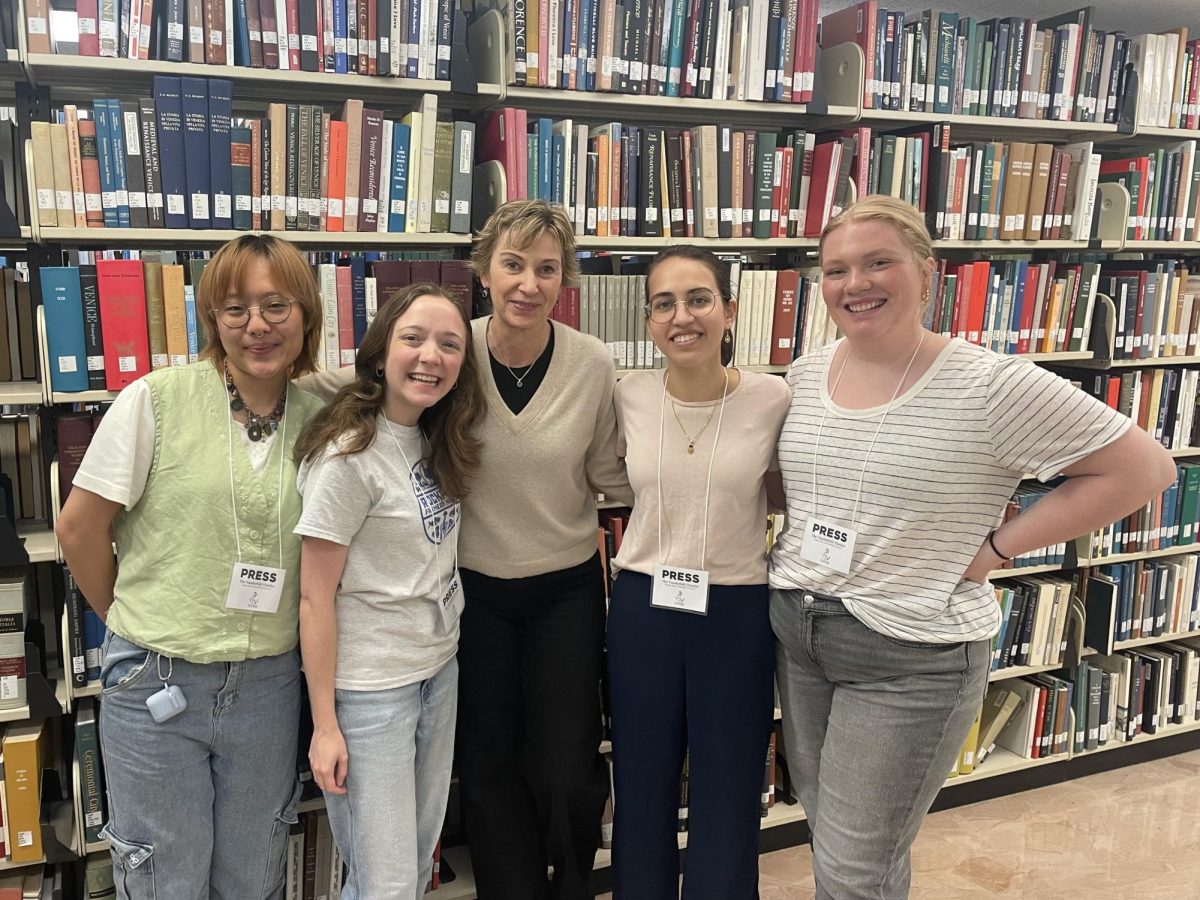Have you been avoiding the news recently? Have you been bombarded by a wave of overwhelming and unsettling headlines? In today’s day and age, we are all exposed to an excess of news through social media — whether we want to be or not. But, now more than ever, we need to be able to discern the truth in the information we consume. Here’s a guide on how to consume news most beneficially.
Why is reading the news important?
In a democracy, elections give citizens the power to enact real change, but to do so intentionally, one must know what they are voting for and why they are voting for it. Forming opinions on the social and political climate can be hard to navigate through the external influences from peers and social media that we encounter every day.
It is important to discern the real facts being reported on an event from the analysis and persuasive language that may come with it. This not only helps you become an informed citizen but also prevents the spread of misinformation or fake news.
What is real?
Unfortunately, it’s difficult to find a completely unbiased news source. While there is always inevitable human bias — such as reporting on events from an American or national perspective — the news has become increasingly biased or skewed in recent years.
It is important to keep in mind an author’s political affiliation or other external influences — they may be influenced by the organization they work for or their state governments, for instance, or simply by the fact that they are interpreting information from an American lens. Reading and consuming with a critical eye will be extremely helpful.
Regardless, it is important to be able to distinguish fact from analysis and recognize when sources are reporting an agenda or a belief rather than facts. Because it is difficult to determine when this is happening, consuming news from both sides of the political aisle can help you to see both sides of what is going on, and then make your inference once you have all of the information possible.
How can we do this?
The most accessible way for a college student to be a conscious consumer of information is to switch up the content that they are consuming (from the news, social media or even their peers) daily.
It is not realistic to ask a student to watch hours of the news or read long articles to decipher the constant stream of information they are receiving. Instead, I would encourage students to get out of their comfort zone, expand the kinds of sources they consume and compare new ideas to see which points of view they align with most.
For example, if a student is consuming all of their news on social media, especially TikTok, that news inevitably aligns with their unique algorithm, likely showing them news from only one side of the political spectrum. If you receive mostly left-leaning news on social media and see an overwhelming or persuasive report on an event, then try reading a right-leaning article on the same event before you draw any conclusions, and vice versa.
The key is to be open-minded. The only way you can be hurt by misinformation is to believe everything you see on social media at face value. If a topic arises that you begin to feel passionate, worried or even just intrigued about, make sure you are doing research from both sides of the aisle before making any definite claims.
Where should we look?
Note: There are no truly “unbiased” news sources, so make sure to fact-check information using other sources and to account for writer and/or corporation partiality.
- The Ad Fontes Media Bias Chart
If you are unsure how to determine a publication’s bias or what its political leanings are, the Ad Fontes Media Bias Chart may be helpful as it sorts sources by partisanship and truthfulness. Choose to read from one source that leans left and one that leans right. See what both sides are saying before aligning with the view of one side automatically.
- Our free access as students
As Vanderbilt students, we get free access to The Wall Street Journal, a center-right-leaning source, and The New York Times, a left-leaning source, and now The Atlantic. Taking in information from both of these news outlets will help students find a balance in their news intake.
- The opinion section
When reading a news source online, it may even be helpful to use the opinion section of a newspaper source. An opinion article intentionally includes the journalist’s interpretation and analysis of a situation, meaningfully using facts to offer an argument. It can be helpful to read these pieces that admit their bias to see what each side of the political aisle believes on a topic. This can be easier to digest than deciphering misinformation or bias in regular articles.
- An example
As a quick example, we can spot an immediate difference in the way these two news outlets reported on the United States Secretary of Defense, Pete Hegseth, leaking classified information to Atlantic Magazine’s Editor-in-Chief. The New York Times article, “Trump Downplays Signal Leak, Backing Waltz and Pointing Finger at Journalist,” shows a left-leaning bias — visible even through the title’s language. Trying to craft a certain narrative, or even push a liberal agenda, the article includes inferential language, drawing attention, for instance, to President Donald Trump having “downplay[ed] the episode while shifting blame onto an opponent[,] a timeworn practice that the administration and its chorus of supporters have deployed throughout the president’s political career as they seek to deflect criticism.” The choice to use words with negative connotations implicitly shares the authors’ views on the current administration and its recent actions.
As a comparison, The Wall Street Journal reported on the same event in the article “Top Trump Officials Debated War Plans on Unclassified Chat Shared With Journalist.” We immediately see a difference, as this title lacks bias or judgment. The article reports simply on the facts of the event, giving context and less of the author’s or publication’s personal perspectives on the situation. It refuses to give an opinion, remaining unbiased, which fails to acknowledging the major operational security failure, while not dwelling on accountability: “Administration officials said President Trump was frustrated by the episode, and was directing his ire at [Michael] Waltz.” This quote exhibits a lot less accountability toward the president than the quote from The New York Times.
Neither source is necessarily more accurate than the other, but they demonstrate that there is opinion in one and not in the other. By reading both of them, you’re able to understand a broader — and more balanced — context of the situation at hand and avoid the filter of a partisan lens.










